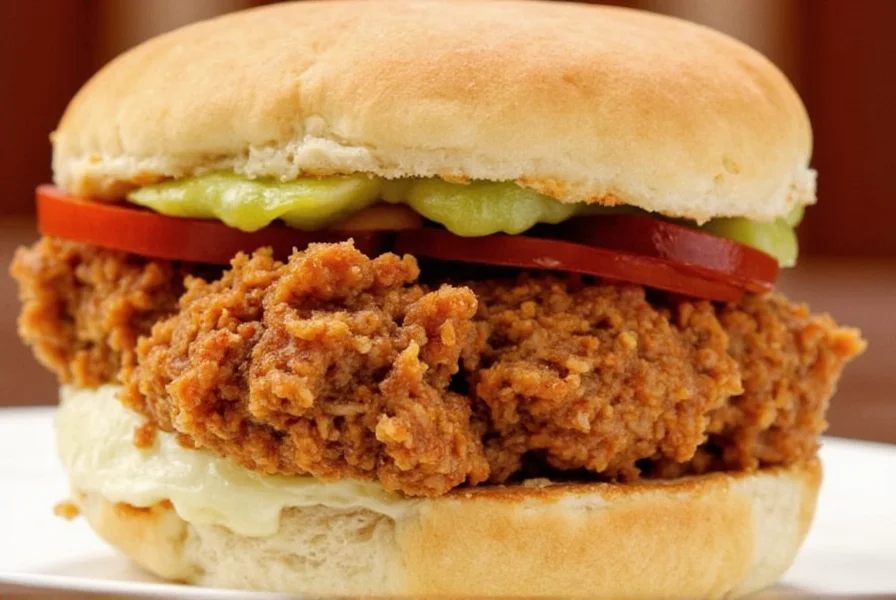Is the Jerk Chicken Sandwich the Spiciest Street Food on Earth? Let’s Find Out!
If you're a spice lover, or even just mildly curious about fiery global flavors, chances are you've heard of the jerk chicken sandwich. But is it really all that spicy? And what makes this island classic so unique compared to other grilled chicken sandwiches around the world?

Table of Contents
- The Origins of the Jerk Chicken Sandwich
- What Makes It So Flavorful?
- How Hot Is Too Hot? Heat Level Breakdown
- Jerk vs. Other Global Chicken Sandwiches
- How to Make Your Own at Home
- Buying Guide: Best Spice Blends for Authentic Jerk Flavor
- Final Thoughts: Worth the Burn?
The Origins of the Jerk Chicken Sandwich
The jerk chicken sandwich has its roots deep in Jamaican culinary tradition. The word "jerk" refers both to the cooking technique and the marinade used to season the meat. Originally developed by the indigenous Taino people, the method was later adopted and refined by African slaves who added their own blend of spices and heat.
This dish evolved over centuries into what we now recognize as the iconic jerk chicken — slow-cooked over pimento wood, marinated in scotch bonnet peppers, thyme, allspice, and a host of aromatic spices. When placed between two slices of soft bread or tucked into a bun, it becomes the legendary jerk chicken sandwich.
What Makes It So Flavorful?
Jerk seasoning isn’t just about heat; it’s a symphony of flavors. Here's a breakdown of the core ingredients:
- Scotch Bonnet Peppers: Bring the fire with a fruity undertone.
- Allspice (Pimento): The backbone of jerk flavor, also used as fuel for smoking the chicken.
- Thyme: Adds earthiness and aroma.
- Ginger & Garlic: For depth and umami punch.
- Onion & Soy Sauce: Enhance moisture and savory notes.
When these elements are combined and left to marinate for hours (or even days), they penetrate deeply into the meat, resulting in bold, smoky, and intensely spiced bites that define the jerk experience.
How Hot Is Too Hot? Heat Level Breakdown
The jerk chicken sandwich definitely packs a punch, but how hot is it exactly? Let's break it down on a scale from 1 to 10 based on typical preparation methods:
| Dish | Heat Level (1–10) | Primary Heat Source |
|---|---|---|
| Jerk Chicken Sandwich | 7 | Scotch Bonnet Pepper |
| Mexican Al Pastor Taco | 4 | Chili de Árbol |
| Sichuan Mapo Tofu Burger | 8 | Sichuan Peppercorn & Chili Oil |
| Turkish Döner Kebab Wrap | 3 | Paprika, Cumin, Cayenne |
While the scotch bonnet can spike up to 150,000 Scoville units, most jerk recipes balance the heat with citrus, sugar, or creamy coleslaw — which is often served alongside the sandwich to mellow out the burn.
Jerk vs. Other Global Chicken Sandwiches
Let’s compare the jerk chicken sandwich with a few international chicken sandwich contenders to see where it stands:
| Dish | Flavor Profile | Texture | Typical Side | Best For |
|---|---|---|---|---|
| Jerk Chicken Sandwich | Spicy, smoky, sweet, and tangy | Grilled, juicy, slightly charred | Coleslaw, plantains, or fried bammy | Spice lovers, Caribbean food fans |
| Korean Dakgangjeong Burger | Glazed, sweet-spicy-garlic | Crispy fried exterior, tender inside | Pickled radish, kimchi slaw | Fried chicken fans, Korean cuisine enthusiasts |
| American Fried Chicken Sandwich | Salty, crispy, buttery | Battered and fried | Pickles, fries, ranch dressing | Classic comfort food lovers |
| Lebanese Za’atar Chicken Wrap | Herby, lemony, earthy | Grilled, lean, and light | Hummus, pickles, tomatoes | Health-conscious eaters, Mediterranean lovers |

As you can see, the jerk chicken sandwich offers one of the more complex flavor profiles — making it not just a hit for spice lovers, but also a great option for those looking for something different from your average fast-food chicken sammie.
How to Make Your Own at Home
If you’re ready to bring a taste of Jamaica into your kitchen, here’s a simple guide to crafting your own jerk chicken sandwich:
- Marinate the Chicken: Use boneless thighs for maximum juiciness. Combine scotch bonnet, garlic, ginger, thyme, soy sauce, vinegar, brown sugar, and allspice in a blender. Marinate for at least 4 hours, preferably overnight.
- Cooking Method: Grill for that smoky char, or bake if you don’t have a grill. If using oven, add a dash of liquid smoke for authenticity.
- Toast the Bun: A lightly toasted brioche or Kaiser roll works best.
- Add the Fixings: Coleslaw adds creaminess and crunch. Optional: sliced avocado, pickled jalapeños, or mango salsa.
Pro tip: Add a squeeze of lime before serving to brighten up the flavors and cut through the richness of the marinade.
Buying Guide: Best Spice Blends for Authentic Jerk Flavor
If you're short on time or want a reliable shortcut, store-bought jerk seasoning can be a game-changer. Here are our top picks:
| Brand | Features | Advantages | Target Audience | Best Used For |
|---|---|---|---|---|
| Walkerswood Jamaican Jerk Seasoning | All-natural, no MSG, authentic island flavor | Perfect balance of heat and spice | Home cooks, Caribbean food lovers | Marinating meats, grilling |
| Badia Caribbean Jerk Seasoning | Easily available in supermarkets, affordable | Great for beginners or everyday use | Newcomers to jerk seasoning | Quick dinners, weeknight meals |
| Rub Me Right All Natural Jerk Rub | Handmade in Jamaica, premium quality | Deep, rich flavor with complex spices | Foodies, professional chefs | Entertaining, gourmet dishes |

Each brand brings something unique to the table, whether it’s convenience, authenticity, or luxury. Choose based on your desired heat level and flavor intensity.
Final Thoughts: Worth the Burn?
In the grand world of chicken sandwiches, the jerk chicken sandwich definitely holds its own — and then some. With layers of smoky spice, rich history, and bold flavor, it's more than just a sandwich; it's a cultural experience.
Whether you're craving a weekend grilling project or looking to spice up your lunch routine, the jerk chicken sandwich deserves a spot on your list. Just make sure to keep some cold coconut water or a refreshing sorrel drink nearby — trust us, your taste buds will thank you.
So go ahead — take a bite, feel the burn, and savor the flavor of one of the most exciting street foods in the world.










 浙公网安备
33010002000092号
浙公网安备
33010002000092号 浙B2-20120091-4
浙B2-20120091-4